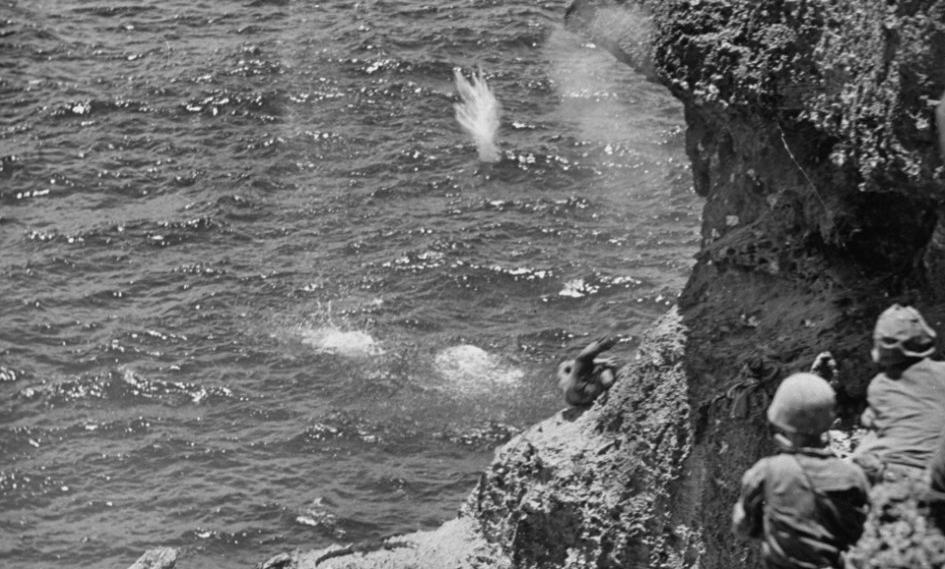Suicide at Saipan: How Many? September 29, 2012
Author: Beach Combing | in : Contemporary , trackbackThe most famous act of mass suicide in the twentieth century, are probably the extraordinary deaths that followed on the fall of Nazi Germany and the Jones Town massacre. However, one localised example from the Second World War in Asia trumps both of these in horror and intensity. Though not a ‘home’ island, Saipan had been occupied for almost a generation by the Japanese when their struggle with American began and some twenty five thousand civilians lived there at the time of the American landings in June of 1944. After a month-long battle American marines kettled surviving Japanese soldiers and civilians into the northern part of the island. The final act was close: if this were a ‘normal’ war then surrender negotiations would have been perfunctorily carried out and soldiers and, particularly, civilians would have been treated humanely.
But in Saipan there were two problems. First, there was the Japanese determination to resist to the death and to not allow the American occupiers to take either soldier or civilian alive: the greatest banzai charge of the war took place on Saipan and left over four thousand Japanese soldiers dead. Then, if this was not enough, a direct order was given by the Emperor Hirohito ordering civilians on the island to kill themselves rather than be taken alive. This order has, in the post-war period, been contested as a forgery, but the evidence seems to be in its favour.
Second, there was perhaps necessary American brutality in the battle northwards. If American marines come on an underground bunker/shelter they did not always ask whether it was a civilian or a military before bringing the flame throwers out: the fact is that civilians were potentially dangerous as well… There was also a basic lack of sympathy towards the Japanese full stop; something documented many times in the years after Pearl Harbor. American attitudes towards German soldiers were far less hostile.
The combination of these two factors meant that when the Marines pressed into the northern pocket, where thousands of Japanese civilians were massed, there were all the prerequisites for a catastrophic failure of understanding and humanity. American loudspeaker units and American marines offered food and safe passage. But many of the civilians were not interested or were too frightened to listen: and they had, in any case, a direct order from the Emperor rattling in their heads. Some waded into the sea, some used knives, some borrowed grenades from Japanese soldiers… Most though seem to have used a nearby suicide cliff, where whole families walked off into eternity. Today it is a tourist attraction… There are horrible films and photographs taken as the Marines secured the northern pocket.
How many died? As noted above some 25,000 Japanese civilians were settled on the island before the war. As to deaths, the number 22,000 is often quoted though this seems impossibly high: it would have, in any case, included civilians killed accidentally or accidentally on purpose by the Americans fighting inland and suicides further to the south. Official US figures give 13000 civilian prisoners that suggests about ten thousand civilians died through the campaign and over the whole island. Somewhere there must be reliable figures for the suicide in the north? drbeachcombing AT yahoo DOT com




